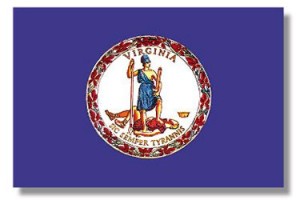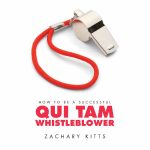
SECOND CIRCUIT ISSUES IMPORTANT NEW OPINION ON THE TOPIC OF “CLAIMS” TO THE UNITED STATES
As regular readers of this blog know, one of the central issues for lawyers litigating qui tam/false claims act cases is finding the “claims” at issue. In my humble opinion, the best way to analyze any false claims act case is to find the claim first, and work backwards from there.
Today we will look at an interesting new opinion issued last week on this topic by the United States Court of Appeals for the Second Circuit. The case is styled United States ex rel. Krause and Bishop v. Wells Fargo, N.A.
But first, a word of caution. The Federal Reserve System was established in 1913 when the world economy (and even our national economy) was considerably less complex. As the world-economic system has grown and developed over the last 106 years so too has our understanding of the Fed and what it does.
As Judge Katzman is quick to point out early on in his opinion, the ruling in this case is a narrow one and may well not apply to other issues involving the Fed. That was likley a wise exercise of judicial restraint, because he recognized that any opinion interpretating critical and fundamental definitions at the Fed could have wide ramifications indeed.
THE FEDERAL RESERVE BANK SYSTEM
“The Fed” is comprised of twelve FRBs, which are separately incorporated banks dispersed geographically throughout the country, and a Board, which is based in Washington, D.C. The Fed is an independent agency within the executive branch. See 12 U.S.C. §§ 241‐252, 264, 341‐362.
Many people are not aware of this, but when a person “negotiates” a check delivered to them (which is legalese for saying they deposit the check into thier bank account or cash it), they do not actually present a claim to the bank on which the check is drawn. Rather, they present a claim to the FRB, which then, in turn, presents the claim to the bank on which the check is drawn. So, in this instance, the FRB serves as a clearinghouse for all checks.
As it turns out, this is most likley the simplest thing the FRB does. The functions of the Fed are many and varied and, in case anyone has been in a cave recently, the Fed has a major impact on the world economy.
But alas, the Fed is not financed using tax dollars. Instead, the Fed is financed by its member institutions — i.e., American banks. Just as consumers maintain bank accounts at banks like Wachovia and Wells Fargo, banks like Wachovia and Wells Fargo maintain bank accounts at the FRBs.
Also of interest: by law, the United States Treasury controls the issue of coins, but the Federal Reserve controls the issue of paper money.
THE ALLEGATIONS OF THE QUI TAM COMPLAINT
Relators filed thier case in 2011 in the Southern District of New York. They alleged that Wells Fargo and Wachovia fraudulently requested loans from the FRBs and that, through the Fed’s emergency lending facilities, “the United States provided significant funding . . . to the Defendants, amounting to at least tens of billions of dollars.”
The relators asserted two theories of liability: implied false certification and express false certification.
The question is whether a fraudulent loan request made to one of the FRBs is an effort to defraud a private entity or an effort to defraud the United States. Even more specifically, this question breaks down into three distinct questions: (1) Are FRB officers and employees officers and employees of the federal government? (2) Are the FRBs “agents of the United States” as defined in the FCA? and (3) Are fraudulent loan requests to the Fed claims to the United States?
The answer to the first question is no, yes and yes, at least in the context of this case…
THE COURT’S NARROW RULING
The opinion makes for an interesting and complex read — in order to do it the justice it deserves, I will cover it some detail in a second post…stay tuned readers.
